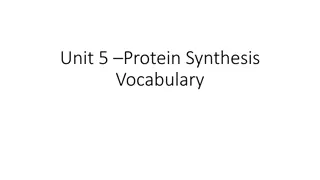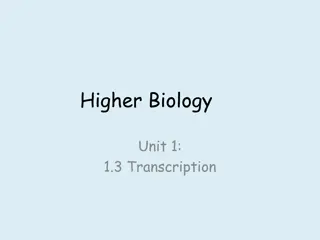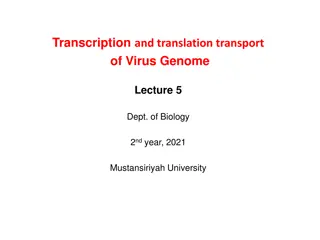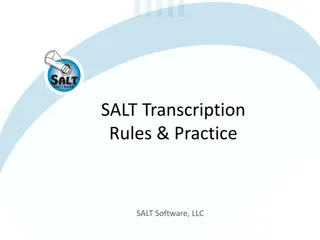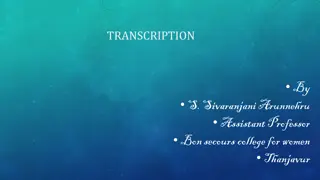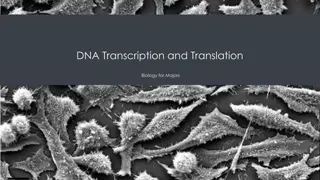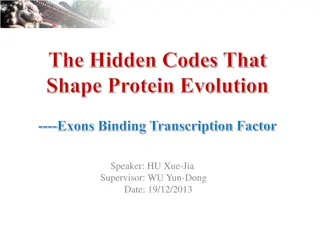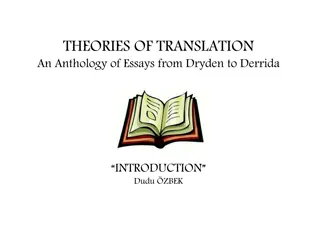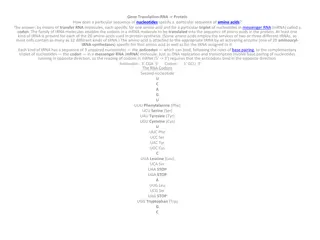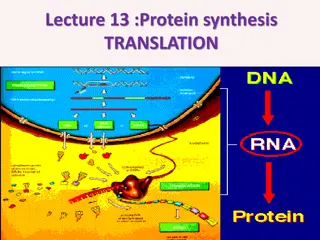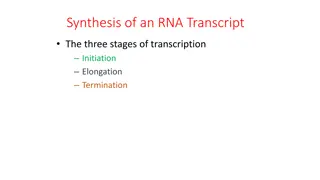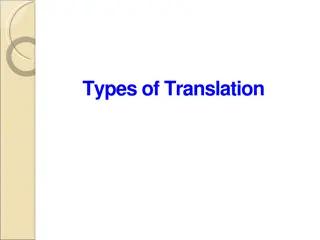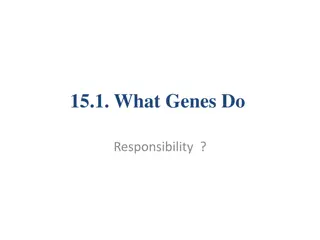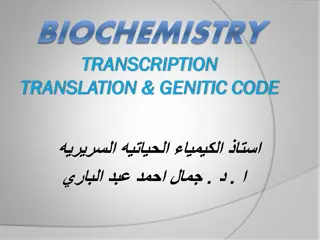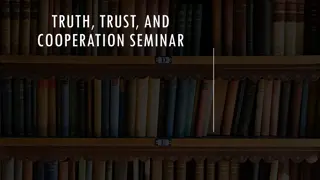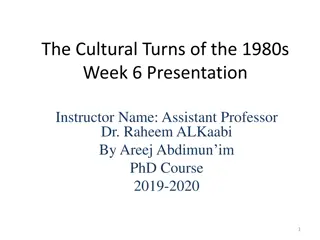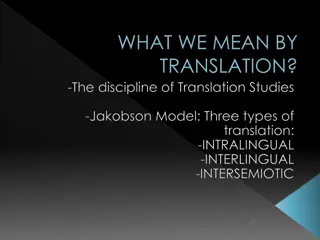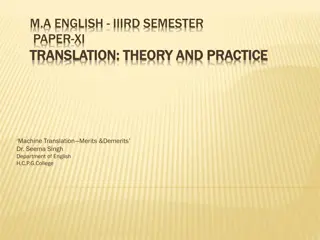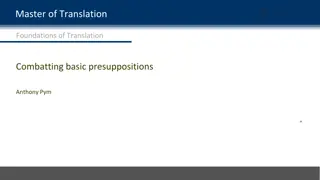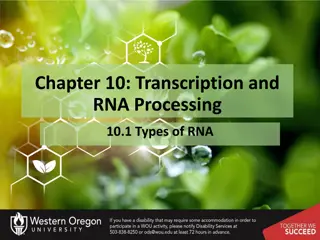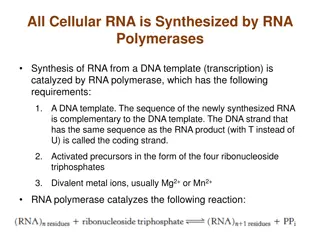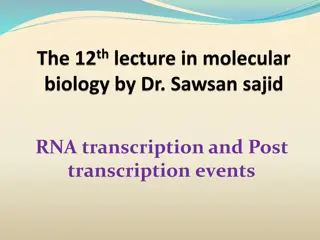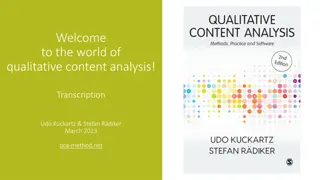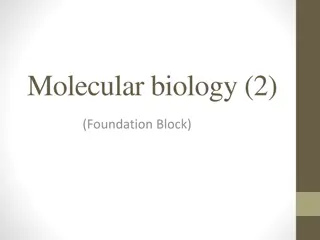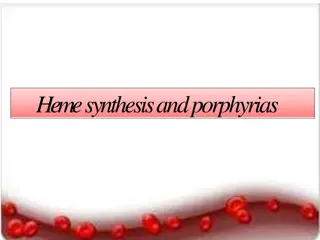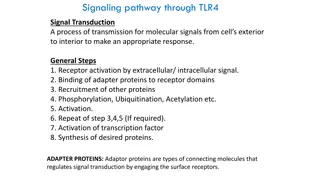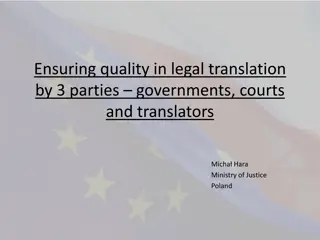Understanding Transcription and Translation in Protein Synthesis
Protein structure is composed of amino acids arranged in specific orders to form polypeptides. This process involves transcription of DNA into RNA followed by translation of RNA into proteins. Replication plays a crucial role in preparing DNA for cell division. The central dogma of molecular biology explains the flow of genetic information from DNA to RNA to proteins, highlighting the key players in transcription such as mRNA and RNA polymerase.
Download Presentation

Please find below an Image/Link to download the presentation.
The content on the website is provided AS IS for your information and personal use only. It may not be sold, licensed, or shared on other websites without obtaining consent from the author. Download presentation by click this link. If you encounter any issues during the download, it is possible that the publisher has removed the file from their server.
E N D
Presentation Transcript
Transcription and Translation Chapter 14 p. 263-273
Protein Structure Made up of amino acids Polypeptide- string of amino acids 20 amino acids are arranged in different orders to make a variety of proteins Assembled on a ribosome
Questions to be answered today How do we get from the bases found in DNA to amino acids? How do we get from a bunch of amino acids to proteins?
Replication DNA DNA now single-stranded New DNA strand forms using complementary base pairing (A-T, C-G) Used to prepare DNA for cell division Whole genome copied/replicated DNA double helix unwinds
Transcription and Translation: An Overview (aka the Central Dogma) DNA Transcription RNA Translation Protein
RNA vs. DNA DNA RNA Double stranded Deoxyribose sugar Bases: C,G A,T Single stranded Ribose sugar Bases: C,G,A,U Both contain a sugar, phosphate, and base.
Transcription RNA forms base pairs with DNA C-G A-U Primary transcript- length of RNA that results from the process of transcription
TRANSCRIPTION ACGATACCCTGACGAGCGTTAGCTATCG UGCUAUGGGACU
Major players in transcription mRNA- type of RNA that encodes information for the synthesis of proteins and carries it to a ribosome from the nucleus
Major players in transcription RNA polymerase- complex of enzymes with 2 functions: Unwind DNA sequence Produce primary transcript by stringing together the chain of RNA nucleotides
mRNA Processing Primary transcript is not mature mRNA DNA sequence has coding regions (exons) and non- coding regions (introns) Introns must be removed before primary transcript is mRNA and can leave nucleus
Transcription is donewhat now? Now we have mature mRNA transcribed from the cell s DNA. It is leaving the nucleus through a nuclear pore. Once in the cytoplasm, it finds a ribosome so that translation can begin. We know how mRNA is made, but how do we read the code?
Translation Second stage of protein production mRNA is on a ribosome
Ribosomes 2 subunits, separate in cytoplasm until they join to begin translation Large Small Contain 3 binding sites E P A
Translation Second stage of protein production mRNA is on a ribosome tRNA brings amino acids to the ribosome
tRNA Transfer RNA Bound to one amino acid on one end Anticodon on the other end complements mRNA codon
tRNA Function Amino acids must be in the correct order for the protein to function correctly tRNA lines up amino acids using mRNA code
Reading the DNA code Every 3 DNA bases pairs with 3 mRNA bases Every group of 3 mRNA bases encodes a single amino acid Codon- coding triplet of mRNA bases
How many bases code for each amino acid? 1 base = 1 amino acid 41 = 2 bases = 1 amino acid 42 = 3 bases = 1 amino acid 43 =
ACGATACCCTGACGAGCGTTAGCTATCG UGCUAUGGGACUG
Which codons code for which amino acids? Genetic code- inventory of linkages between nucleotide triplets and the amino acids they code for A gene is a segment of RNA that brings about transcription of a segment of RNA
Transcription vs. Translation Review Transcription Process by which genetic information encoded in DNA is copied onto messenger RNA Occurs in the nucleus DNA Translation Process by which information encoded in mRNA is used to assemble a protein at a ribosome Occurs on a Ribosome mRNA mRNA protein


